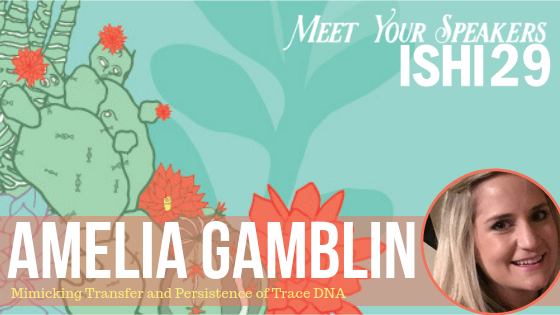The true origin of contamination events can rarely, if ever, be truly determined as nucleated cells and DNA molecules, akin to bacteria cells and viruses are invisible to the naked eye due to their microscopic nature.
Contamination incidents in forensic laboratories result in quality investigations, increased labour, higher costs, poor customer service, injustice for complainants, and have the potential to render valuable irreplaceable casework samples invalid.
In her presentation at ISHI, Amelia Gamblin (Forensic Scientist at the Auckland Service Centre, Institute of Environmental Science and Research (ESR) Ltd.) will clarify contamination mechanisms, areas prone to contamination build-up and highlight items most susceptible to the transfer of contamination events.
We sat down with Amelia and asked her how trace DNA might be unintentionally transferred to a sample, what consequences this could have, and how she became interested in forensic science.
Hi Amelia, thanks for sitting down with us today. Can you explain how trace DNA might be unintentionally transferred onto a sample?
- Environmental contamination
- Operator contamination
- Consumables and/or utensils are contaminated
- Ineffective laboratory cleaning techniques and/or methods which can lead to:
- Sample to sample contamination
- Case to case contamination
What consequences can this have?
- Can result in mixtures which can complicate interpretation
- May overwhelm the target DNA, especially low level such as touch DNA
- Questions quality assurance procedures and integrity of results
- Poor customer service
- Loss of irreplaceable samples
Can you describe the goals of your study? How did you become involved?
DNA is invisible to the naked eye, and no cleaning regime is 100% effective. The main goal of the study was give insight into the behavior of DNA transfer within the laboratory and to illuminate DNA transfer pathways while identifying equipment prone to contamination build up.
How did you go about locating areas that are prone to contamination?
By using the UV fluorescent markers and performing routine examinations and tasks and then observing the results with a UV light. UV fluorescent dust was also placed in areas to determine the effects of air conditioning on airborne DNA molecules.
What key learning did you take away from this study? Did anything surprise you?
That the effectiveness of cleaning regimes was very operator dependent.
How did you become interested in forensic science?
All through school I was very interested in science. I also enjoyed reading crime novels and problem solving. Forensic science then became very popular in TV and film which helped bring together my interest in crime and science as a career.
What do you feel is the biggest challenge that forensic laboratories are facing today?
Staying relevant and being able to provide the best service with limited resourcing and funding.
What tips would you give to someone who is just starting out in the forensics field, or what is the best advice that you’ve received?
Keep your interests and studies broad. There are a range of forensic disciplines and areas that you can get into. And take on extra responsibilities and roles you never know where it might take you.
For those still deciding whether to attend, what is your favorite thing about ISHI, or what are you most looking forward to this year?
I have not attended ISHI before but I am looking forward to seeing the research being carried out by other labs around the world.
WOULD YOU LIKE TO SEE MORE ARTICLES LIKE THIS? SUBSCRIBE TO THE ISHI BLOG BELOW!


